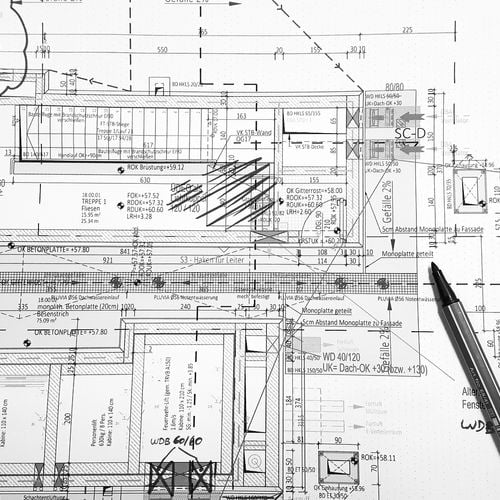If you’re thinking about selling your Silicon Valley home, one of the first questions you’re likely asking is, “How long will it take to see my money once I list my home?” It’s a big question that every seller needs answered to plan their next move, whether it’s buying a new home, relocating, or simply cashing in on their investment. Here’s a look at what you can expect when selling your home in Silicon Valley.
The Short Answer: Faster Than You Think
Surprisingly, it often takes less time to sell your home than the time you’ve likely spent thinking about selling it! Many sellers debate for months or even years before finally deciding to work with a REALTOR®, list the property, and enter the market. Once you take that step, the actual time on market—how long it takes for buyers to make offers and for you to accept one—depends heavily on the current real estate climate, the neighborhood, your home’s price point, and other factors.
Average Days on Market: Silicon Valley Snapshot
Historically, Silicon Valley homes can stay on the market anywhere from a week to a few months. During a hot market with limited inventory, the average time can be as short as seven days. However, in times when there’s a lot of inventory and weak demand, it can stretch up to 60 or even 90 days. But even within the “market average,” it’s good to know how fast or slow homes like yours in your neighborhood (or zip code) are selling. That’s because real estate is all about location, and some neighborhoods appear to be perpetually hot, while others (especially rural properties) tend to stay on the market considerably longer on average.
It’s important to bear in mind that while market conditions influence how long your home may stay listed, pricing is ultimately the biggest factor.
Price is Key
Here’s the honest truth: the price that you set for your home – your list price, or asking price – has nothing to do with how much money you’ll get for your home. If it did, everyone would just ask for $1 billion for their homes, because by asking for more, you’d get more – but that’s not true, and everyone knows that. Rather, the price that you ask for your home is really all about how long it will take to sell, and has nothing to do with how much it will sell for.
If you price it strategically – that is to say, low – you’re likely to see offers much sooner, sometimes even the same day you list it. Conversely, if you price above market, you may end up waiting longer—perhaps weeks, months, or even years if your price doesn’t align with buyer expectations. Think of pricing as setting the stage for your selling timeframe; the more attractive it is on the spectrum of price to value, the faster buyers will show interest and write offers.
On the flip side, if your price is out of alignment with what buyers expect to see given the location, lot size, square footage, floor plan and condition, you can expect the sale will drag on for quite some time – until the market catches up to your asking price, or, more likely, until you reduce the price to the point where you begin to attract offers.
Preparation: The Bigger Time Investment
Before you list, you may want to spend some time preparing your home for sale, which often takes more time than the actual time on market – sometimes, quite a bit more time. This preparation can involve decluttering, staging, minor repairs, or even more extensive renovations depending on the property’s condition. Many homeowners spend months sorting through belongings accumulated over the years—often decades—they have lived in their home. However, once the home is emptied out, many properties can be market-ready within a week or two.
But the thought of emptying the house out, donating items, selling others, packing away boxes and moving them to storage or to a new house – coupled with anticipated repairs and improvements – seems daunting to most homeowners. It’s one reason they put off moving for months and years, because it all seems like such a project.
That’s why I offer concierge services – where I do it all for you, to the extent that you’ll let me. Need help packing, moving, hauling, cleaning, repairing, panting, landscaping? Whatever you need – I’ve got you! In fact, with Compass Concierge, we can even advance you some of the equity in your home to pay for all or some of these expenses so you won’t have to be cash out of pocket.
The Work That Pays Off
While some sellers opt to put their homes on the market with little or no preparation whatsoever, those who invest time in decluttering, basic landscaping, and enhancing lighting often see higher returns. These tasks are quick, affordable, and impactful – what I call the low hanging fruit. These “minor improvements” can go a long way to making your home seem bigger, brighter, cleaner, and more inviting. These kinds of improvements are more about eliminating turn-offs which drive buyers away – like clutter, dirt, unpleasant smells, dark rooms, and overgrown landscaping. These are fairly universally disliked by buyers, so addressing these issues can pay big dividends.
On the other hand, major renovations are generally not advisable for most Silicon Valley homes. It’s been studied to death: major renovations just don’t pencil out, unless you are a skilled contractor and can do the labor for free. In this case, you are building sweat equity – but it’s rare to be able to hire this work out and make any money off it. Major renovations like new kitchens, bathrooms, roofs, driveways, and many more such projects typically increase your home price by 50-70% of what they cost. So while they will increase your sale price, they will actually decrease your net at closing.
Many sellers try to thread the needle and do some more expensive tweaks – such as painting old wooden cabinets, installing new counter tops, changing out vanities in bathrooms but leaving the rest in its prior condition. This is what is known in the industry as “putting lipstick on a pig.” Silicon Valley buyers won’t be fooled by this – they’ll see it for what it is, and know they’ll have to rip it all out. They won’t pay you the price you think they will because they just won’t see the value.
The “Two-Day Sale” Option
For sellers eager to expedite the sale, consider my famous two-day sale. This strategy involves pricing the home at an obscenely low price, holding a weekend’s worth of open houses, and reviewing offers immediately afterward. The result? A competitive atmosphere where multiple buyers submit offers, driving up the final sale price and reducing time on the market.
This works extremely well by filling buyers with a sense of urgency. Buyers see the low price – and they know the home won’t last on the market. They come to the open house, and their fears are confirmed: the home is swarmed with buyers. They know that the seller isn’t waiting for anything, that offers will be reviewed as received, so if they want to get in on the action, they need to get an offer in right away.
That’s where the rubber meets the road: I skillfully negotiate the offers, working buyers against each other, to drive the price higher until we have determined which among the many possible buyers is able to offer you, the seller, the most desirable combination of price and terms. A well-executed two-day sale get you a sky high price and remarkable terms, such as a very fast closing, sometimes as brief as seven to ten days, which means a quicker closing and, ultimately, faster access to your funds.
From Listing to Close: Tailoring to Your Timeline
Once you’ve accepted an offer, the escrow period usually lasts around 20-30 days. Some buyers may offer quicker closings – cash buyers, for example, will often be able to close in 7 to 10 days (and 25-40% of buyers will be cash in Silicon Valley). However, today’s lenders who work with well-qualified buyers in Silicon Valley can often close loans as quickly as 15 days. You may not want such a quick closing, however, it’s better to close sooner than later in most cases – and with my “2 day sale” you can usually get favorable terms such as 7-60 day rent-backs, allowing you more flexibility. With the right pricing and marketing strategy, you could see offers shortly after listing, moving you to a close within a matter of days after hitting the market.
In Conclusion: Timing Varies, But Control Is Yours
Ultimately, the time it takes to sell your home in Silicon Valley comes down to your specific goals, needs, motivations and timeline. By pricing strategically, decluttering, and potentially using an ambitious approach like my two-day sale, you can significantly shorten the time from listing to cashing your check. Ready to take the next step? Reach out to me to discuss how we can tailor the timing of your sale to best meet your needs!
Amazing Mountain View Homes for Sale
2
3
4
5
6
7
8
9
10
11
12
13
14
15
16
17
18
19
20
21
22
23
24
25



